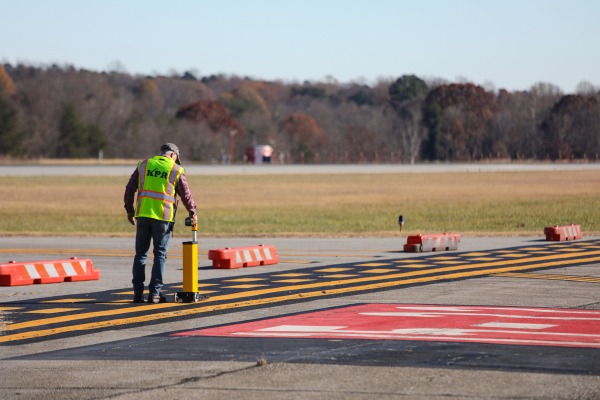
Blog
Self-Inspection in Airports: Implementation Mechanisms and Its Role in Enhancing Safety and Compliance
How Do Internal Inspection Programs Help Maintain the Highest Performance Standards?
How Do Internal Inspection Programs Help Maintain the Highest Performance Standards?


In the complex and highly regulated environment of modern airports, ensuring safety, compliance, and operational efficiency is a constant challenge. One of the most effective tools employed by airport operators to meet these demands is the self-inspection program, also known as an internal inspection or internal audit system. This proactive mechanism enables airports to monitor their own performance, identify potential risks, and maintain alignment with regulatory standards and international best practices.
Understanding Self-Inspection in Airports
Self-inspection refers to a structured, recurring process through which airport personnel systematically evaluate various operational areas, infrastructure, procedures, and services against established safety and compliance benchmarks. Unlike external audits conducted by aviation authorities or third-party agencies, self-inspections are internally managed and offer greater flexibility, immediacy, and insight into daily operations.
These programs are not just about ticking boxes; they represent a cultural shift towards continuous improvement, accountability, and risk mitigation. By embedding self-inspection into the organizational framework, airports foster a safety-first mindset among employees at all levels.
Implementation Mechanisms of Self-Inspection Programs
The successful implementation of a self-inspection program involves several key components that work together to ensure consistency, effectiveness, and relevance. These include:
1. Establishing Clear Objectives and Scope
Before launching a self-inspection program, it's essential to define its goals. These may include:
- Ensuring compliance with national and international aviation regulations (e.g., ICAO, FAA, EASA).
- Identifying safety hazards before they lead to incidents.
- Maintaining high standards of service delivery and infrastructure maintenance.
- Supporting quality management systems like ISO 9001 or SMS frameworks
The scope should cover critical areas such as airside operations, terminal security, emergency preparedness, runway conditions, signage, lighting, wildlife hazard management, and staff training protocols.
2. Developing Inspection Protocols and Checklists
Standardized checklists and procedures form the backbone of any self-inspection program. These documents outline what needs to be inspected, how often, and the criteria for evaluation. For example:
- Daily checks on runway markings and lighting.
- Weekly inspections of fire safety equipment.
- Monthly reviews of security checkpoint procedures.
- Quarterly assessments of emergency response drills.
Checklists must be detailed yet user-friendly, allowing inspectors to record observations consistently and efficiently.
3. Training Inspectors and Assigning Responsibilities
Personnel conducting inspections must be thoroughly trained and possess a clear understanding of the relevant regulations and airport-specific procedures. Training should include:
- Regulatory requirements (e.g., from civil aviation authorities).
- Risk identification techniques.
- Proper documentation and reporting methods.
- Use of digital tools for data collection (if applicable).
Roles and responsibilities should be clearly defined, including who conducts the inspections, who reviews the findings, and who follows up on corrective actions.
4. Scheduling and Conducting Inspections
A well-structured schedule ensures that inspections are carried out regularly and comprehensively. Some inspections may occur daily or weekly due to their critical nature, while others might be monthly or quarterly. Scheduling should consider:
- Operational cycles and peak hours.
- Seasonal variations (e.g., bird migration periods affecting wildlife control).
- Post-maintenance or post-construction evaluations.
Each inspection should involve physical observation, interviews with staff, review of logs and records, and real-time testing where applicable.
5. Reporting and Documentation
Every inspection must result in a formal report documenting:
- What was inspected.
- Findings (including non-compliances and good practices).
- Risk ratings.
- Recommended corrective actions.
- Responsible parties and timelines for resolution.
Digital platforms can streamline this process, enabling real-time updates, trend analysis, and automated alerts for overdue actions.
6. Corrective Action Management
Identifying issues is only half the battle. A robust self-inspection system includes mechanisms to:
- Prioritize issues based on severity and urgency.
- Assign corrective actions to responsible departments.
- Monitor progress until resolution.
- Verify the effectiveness of implemented solutions
This feedback loop ensures that problems don’t recur and that improvements are sustained over time.
7. Management Review and Continuous Improvement
Senior management should periodically review self-inspection outcomes to assess overall system performance. This review helps:
- Identify systemic weaknesses.
- Allocate resources more effectively.
- Update policies and procedures.
- Align internal practices with evolving regulations and industry standards.
By integrating self-inspection findings into strategic planning, airports can drive long-term operational excellence.
The Role of Self-Inspection in Enhancing Safety and Compliance
Self-inspection programs play a pivotal role in maintaining the highest standards of safety and compliance in airports. Their contributions include:
1. Proactive Risk Identification
Rather than waiting for accidents or regulatory penalties, self-inspections allow airports to detect vulnerabilities early—such as faulty equipment, procedural lapses, or human errors—and take corrective action before incidents occur.
2. Regulatory Compliance Assurance
With ever-evolving aviation regulations, staying compliant is a dynamic task. Regular internal audits ensure that all airport activities align with legal and regulatory expectations, reducing the likelihood of enforcement actions or fines.
3. Improved Operational Efficiency
Consistent monitoring of processes leads to better coordination between departments, streamlined workflows, and optimized resource use. Issues that could disrupt operations are addressed promptly, minimizing delays and enhancing passenger experience.
4. Enhanced Accountability and Transparency
When employees know that regular inspections are part of the routine, they are more likely to adhere to standard operating procedures. This culture of accountability fosters professionalism and transparency across the organization.
5. Support for Safety Management Systems (SMS)
Self-inspection is a core component of an airport’s SMS framework. It provides valuable data for risk assessments, incident investigations, and safety performance indicators, contributing to a holistic approach to safety governance.
6. Preparation for External Audits
Well-documented and frequently updated self-inspection records make external audits smoother and less stressful. Authorities view consistent internal oversight as a sign of maturity and commitment to safety and compliance.
7. Stakeholder Confidence
Passengers, airlines, regulators, and partners place greater trust in airports that demonstrate rigorous internal controls. A strong self-inspection program signals reliability, professionalism, and a commitment to excellence.
Challenges and Considerations
While the benefits are substantial, implementing a successful self-inspection program is not without challenges. Common obstacles include:
- Resource constraints: Limited staffing or budget can affect the frequency and depth of inspections.
- Resistance to change: Some employees may perceive internal audits as intrusive or punitive rather than developmental.
- Inconsistent execution: Without proper training and oversight, inspections may lack uniformity or rigor.
- Data overload: Collecting too much information without a system to analyze and act on it can reduce effectiveness.
To overcome these, leadership support, investment in training and technology, and fostering a non-punitive safety culture are essential.
Conclusion
Self-inspection in airports is far more than a compliance exercise—it is a strategic tool for managing safety, improving performance, and building resilience. Through systematic evaluations, transparent reporting, and timely corrective actions, internal inspection programs help airports stay ahead of risks, adapt to changing environments, and uphold the highest standards of service and safety.
